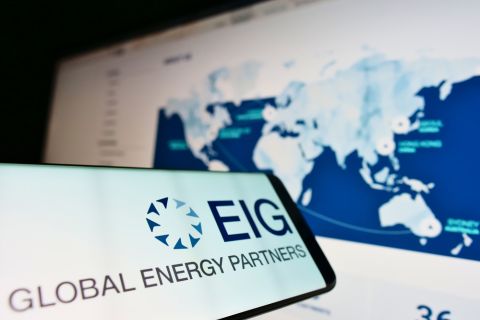If predictions in ExxonMobil’s latest energy outlook hold true, the planet will be home to 2 billion more people, the global economy will be 130% larger, and there will be a 90% growth in demand for electricity by 2040. So the world will need to tap every energy source possible – including renewables – to meet global energy demand, which is expected to be about 35% higher. Fossil fuels are still expected to overwhelmingly supply demand, reaching about 60% about 25 years from now. Although conventional crude oil production is predicted to drop slightly during the forecast period, ExxonMobil believes the decline will be offset by rising tight oil, deepwater, and oil sands production thanks to new technology. Moreover, “we estimate that by 2040, about 65% of the world’s recoverable crude and condensate resource base will have yet to be produced.” Natural gas is anticipated to be the world’s fastest-growing major energy source through 2040, according to the outlook. It could replace coal in the No. 2 spot, following oil as the world’s top energy source. Demand for oil could rise by about 25% through 2040, compared to 65% for natural gas, as coal’s demand continues to fall. But the company believes renewable energy supplies will grow by about 60%, led by jumps in hydro, wind, and solar. “Wind, solar, and biofuels are likely to make up about 4% of energy supplies in 2040, up from 1% in 2010. We foresee wind and solar providing about 10% of electricity generated in 2040, up from about 2% in 2010,” according to the outlook. While the percentages of renewable energy supplies’ contributions to the overall energy mix are small, every bit of energy will be needed to meet growing worldwide demand, especially in China and India. “The total number of households in the world will rise significantly in coming decades; we expect an increase of close to 50%, from 1.9 billion households in 2010 to 2.8 billion by 2040, due to increasing population and urbanization,” the outlook said. “At the same time, urbanization and rising incomes — particularly in China, India, and the other 10 key growth countries — are driving demand for energy not just for basic needs but also modern uses such as air conditioning, appliances, and electronics.” This makes efforts to diversify energy sources important. Several steps already have been taken by companies and governments. US Interior Secretary Sally Jewell recently announced that the Bureau of Ocean Energy Management (BOEM) will allow Principle Power Inc. to submit a plan to build a 30-MW pilot project using floating wind turbine technology offshore Oregon. “This pioneering project would demonstrate floating wind turbine technology capable of tapping the rich wind energy resources in deep waters offshore Oregon,” Jewell said in the news release. “As we look to broaden our nation’s energy portfolio, the innovative technology and its future application hold great promise along the West Coast and Hawaii.” Citing the National Renewable Energy Laboratory, the release stated that the West Coast holds more than 800 gigawatts of wind energy potential offshore. Total potential offshore US deep water is nearly 2,000 gigawatts. The federal government plans to hold more competitive auctions for wind energy areas offshore Maryland, New Jersey, and Massachusetts this year. Additional oil and gas lease sales are also set for this year. The next two are scheduled for March 19, both offering blocks in the Gulf of Mexico. Lease sale 231 in the Central Planning Area could result in the production of approximately 1 Bbbl of oil and 113 Bcm (4 Tcf) of gas, while lease sale 225 in the Eastern Planning Area could result in the production of 71 MMbbl of oil and 4.6 Bcm (162 Bcf) of gas, according to BOEM estimates. Contact the author, Velda Addison, at vaddison@hartenergy.com.
Recommended Reading
EQT Sees Clear Path to $5B in Potential Divestments
2024-04-24 - EQT Corp. executives said that an April deal with Equinor has been a catalyst for talks with potential buyers.
Matador Hoards Dry Powder for Potential M&A, Adds Delaware Acreage
2024-04-24 - Delaware-focused E&P Matador Resources is growing oil production, expanding midstream capacity, keeping debt low and hunting for M&A opportunities.
TotalEnergies, Vanguard Renewables Form RNG JV in US
2024-04-24 - Total Energies and Vanguard Renewable’s equally owned joint venture initially aims to advance 10 RNG projects into construction during the next 12 months.
Ithaca Energy to Buy Eni's UK Assets in $938MM North Sea Deal
2024-04-23 - Eni, one of Italy's biggest energy companies, will transfer its U.K. business in exchange for 38.5% of Ithaca's share capital, while the existing Ithaca Energy shareholders will own the remaining 61.5% of the combined group.
EIG’s MidOcean Closes Purchase of 20% Stake in Peru LNG
2024-04-23 - MidOcean Energy’s deal for SK Earthon’s Peru LNG follows a March deal to purchase Tokyo Gas’ LNG interests in Australia.




